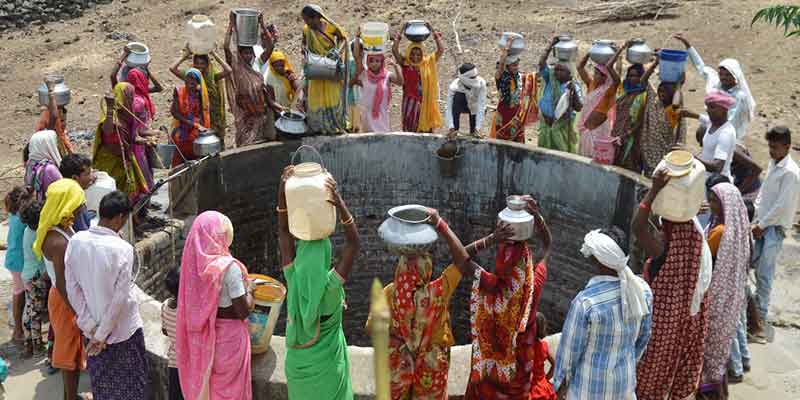- India
- Dec 26
Rs 6,000 cr Atal Bhujal Yojana launched
Prime Minister Narendra Modi has launched the Atal Bhujal Yojana for better management of groundwater, stressing on the need to use technology which helps prevent wastage of water in various spheres, including agriculture.
Urging farmers to switch over to crops that use less water, he exhorted people not to waste the precious natural resource in daily household needs.
He urged startups to come up with technology to ensure minimal use of water for various needs.
Modi said only 3 crore out of 18 crore rural households today have clean, piped water. The plan, he said, is to provide the remaining 15 crore rural households with piped water in the next five years.
Atal Bhujal Yojana or the guidelines related to the Jal Jeevan Mission are big steps in proving the resolve to deliver water to every household in the country by 2024, the PM said. The Union government and state governments will spend Rs 3.5 lakh crore on water-related schemes in the next five years, he added.
Atal Bhujal Yojana (Atal Jal)
Atal Jal has been designed with the principal objective of strengthening the institutional framework for participatory groundwater management and bringing about behavioral changes at the community level for sustainable groundwater resource management in seven states.
These states are Gujarat, Haryana, Karnataka, Madhya Pradesh, Maharashtra, Rajasthan and Uttar Pradesh.
The implementation of the scheme is expected to benefit nearly 8,350 gram panchayats in 78 districts in these states. Atal Jal will promote panchayat-led groundwater management and behavioural change with primary focus on demand-side management.
Out of the total outlay of Rs 6,000 crore to be implemented over a period of five years (2020-21 to 2024-25), 50 per cent shall be in the form of World Bank loan, and be repaid by the central government.
The remaining 50 per cent shall be through central assistance from regular budgetary support. The entire World Bank loan component and central assistance shall be passed on to the states as grants.
Aim of the scheme
The scheme is aimed at contributing towards the goal of doubling farmers’ incomes, promoting participatory groundwater management, improving water use efficiency on a mass scale, improving cropping pattern and promoting efficient and equitable use of groundwater resources and behavioural change at the community level.
The scheme has two major components - one is institutional strengthening and capacity building for sustainable groundwater management in the states, including improving monitoring networks, capacity building, strengthening of water user associations.
The second component is incentivising states for achievements in improved groundwater management practices namely data dissemination, preparation of water security plans, implementation of management interventions through convergence of ongoing schemes, adopting demand side management practices, etc.
Groundwater contributes to nearly 65 per cent of total irrigated area of the country and nearly 85 per cent of the rural drinking water supply.
Manorama Yearbook app is now available on Google Play Store and iOS App Store

